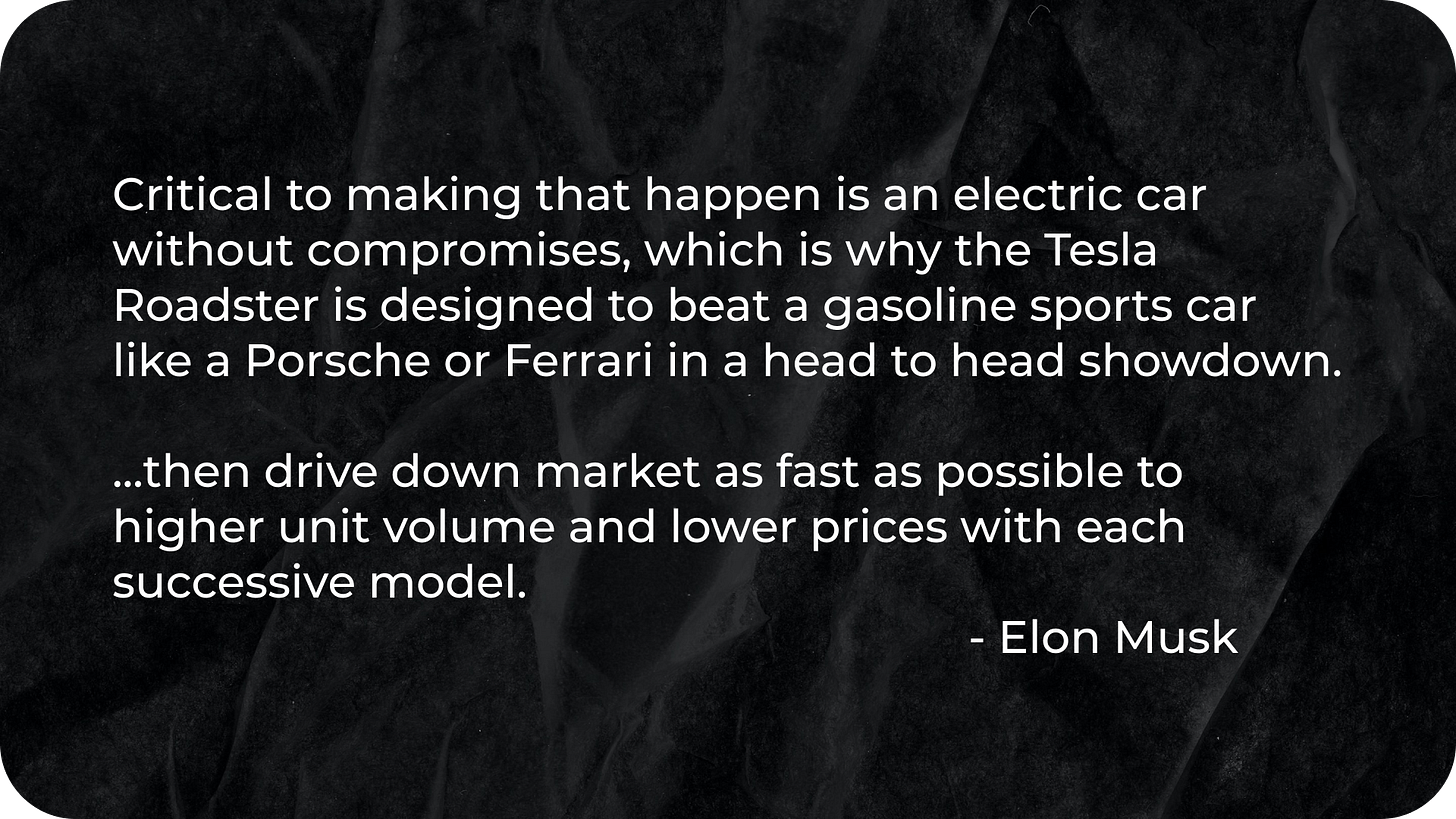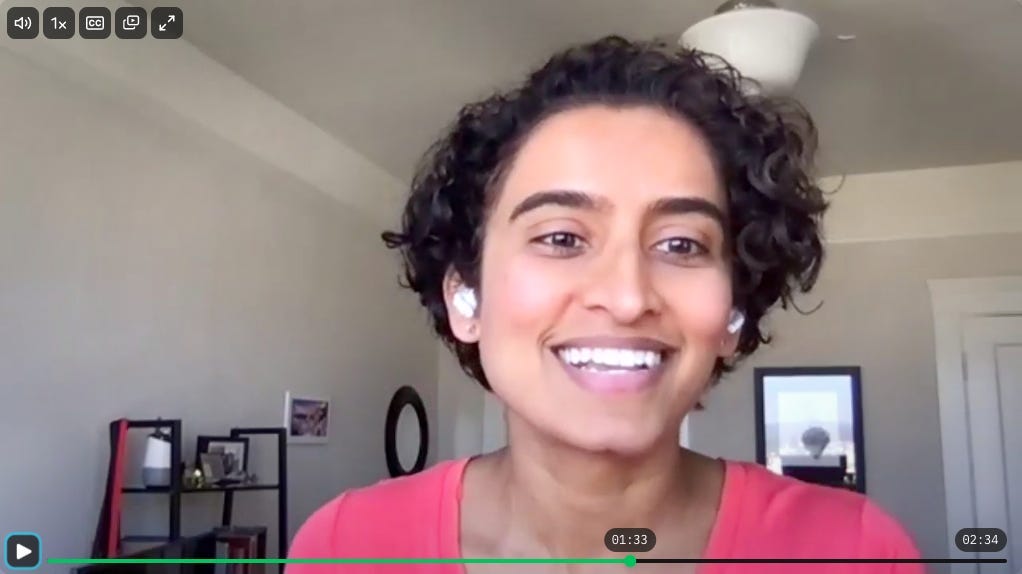🛠 The Secret Elon Musk Product Strategy: Product Person #48
hi, Anthony here! In this newsletter, I curate insights on how to build great products. You’ll improve your product skills with every issue.
Let’s get to it.
(Btw, my PM Discord group has 50+ members now. Come join!)
The Secret Tesla Motors Master Plan
Insight from the Tesla blog #1 and Melissa Perri!
When we think of Elon Musk, the first thing that comes to mind is his wild Twitter game. But quietly (and sometimes loudly), both Tesla and SpaceX are poised to completely revamp their respective industries. Today, we’re diving into Elon’s 2006 blog post to talk about Product Strategy.
In this issue, we’re diving into HOW Elon communicated his product strategy for Tesla and convinced a whole generation to support Tesla.
The Vision
The Challenge
The Target Condition
The Vision
Product strategies aren’t line-by-line plans. Plans almost always fail; no plan survives first contact with the enemy or in our case, reality. Rather the start of a product strategy should always be the high-level, ultimate view of where the company is going.
For Tesla, it’s to:
expedite the move from a mine-and-burn hydrocarbon economy
solar electric company …. primary… sustainable solution
It’s thinking in the long-term. It’s qualitative, any progress that helps us burn fewer hydrocarbons is a step in the right direction. And most importantly, it’s ambitious.
Compare that against the more generic vision statements for other modern tech companies:
Airbnb’s mission is to create a world where anyone can belong anywhere and we are focused on creating an end-to-end travel platform that will handle every part of your trip.
DoorDash is a technology company that connects people with the best in their cities. We do this by empowering local businesses and in turn, generate new ways for people to earn, work and live.
If we were to rewrite Airbnb’s mission statement -
We’re rethinking the travel experience to build a unified experience rather than separate, disjoint parts. From finding the perfect lodging to booking spectacular experiences, Airbnb helps millions enjoy every second of their getaway.
The Challenge
The challenge is the first business goal you have to achieve on the way to your longer-term vision. For Tesla, that was proving to the world that an all-electric car can be built and can compete at the same level as the world’s leading gasoline sports cares.
When we build products, we have a threshold of knowledge. We cannot start on Day 1 and exactly plan to reach our vision. The challenge helps clarify what strategic objective for the team (and supporters) to align and focus on.
The right challenge isn’t a definition of some product or feature to be built but rather a validation of a certain hypothesis. For Tesla, building the Roadster itself was less important than the validation that all-electric vehicles could measure up to the best of gasoline cars.
If you were to build a podcasting startup, the challenge in your product strategy could be to achieve a similar CPM as display or video ads. Or if you’re building an enterprise B2B startup, it might be signing up your first large Fortune 500 company as a customer.
The Target Condition
The target condition is meant to break down the Challenge. In Tesla’s case, they’ve already proved the Challenge along one dimension, performance. However, along the dimension of price, the $89k price point of the Roadster prices is magnitudes higher than most family cars. The target condition provides a roadmap to solving that Challenge.
Target conditions often focus on a different dimension of the Challenge. Let’s take the example of Uber:
Challenge:
Decrease wait times in cities where it is over 10 minutes to less than 5 minutes
This might be caused by the fact that there are not enough cars to serve that city. And so the Target Condition is to:
Onboard at least one driver for every 50 people in each city
Although a target condition shouldn’t be so simple that it be achieved tomorrow, it should provide a clear roadmap with inspiration for where the team should start looking.
Summary
Let’s put it all together.
🔭Vision - expedite the move from a mine-and-burn hydrocarbon economy towards a solar electric economy.
🧱Challenge - build an electric car without compromises and drive down market as fast as possible to higher unit volume and lower prices.
🛠️Target condition - build a sporty four door family car at roughly half the $89k price point of the Tesla Roadster and the third model will be even more affordable.
It’s hard to root against a company with a product strategy so clearly defined.
And inspired by Tesla’s product strategy I’ve attempted to write one for The Product Person:
Write high quality newsletter for early/aspiring PMs
Use audience to book interviews with experienced PMs about their career
Use revenue from interviews to build comprehensive tools for PMs
While doing above, also build a community of PMs helping each other
PM News #9
By the way, I just released my interview with Rohini Pandhi (PM Lead @ Square) on PM News. There’s a lot of great highlights but just for you, here are a few snippets:
🛠 Rohini explains what she sees as some key differences between doing product at a startup vs doing product at a big company (2m 10s) (link).
💡 Rohini breaks down a few important concepts she’s learned about product in her career (2m 50s) (link).
🧠 Rohini talks about why you shouldn’t blindly implement other people’s product frameworks into your own product process. Develop your own product process using first principles thinking. (2m 34s) (link).
End Note
Thanks for enjoying The Product Person. I’d love it if you shared it with a friend or two. If this was shared to you, you can subscribe here.
❤️ Hit the heart button as well, it helps a lot.
Have a great day,
Anthony
(P.S. Anything I can help you with? Just reply to this email, I’ll respond)
One last thing, how did you like this post? Vote below!









